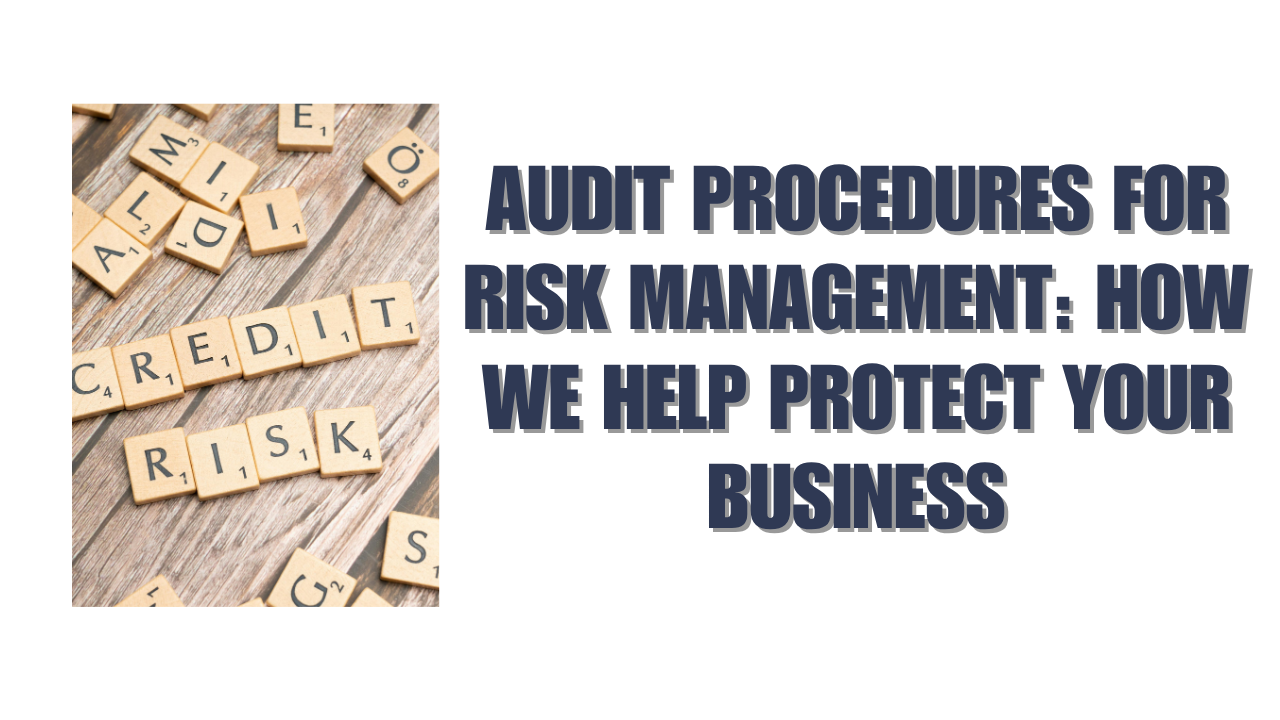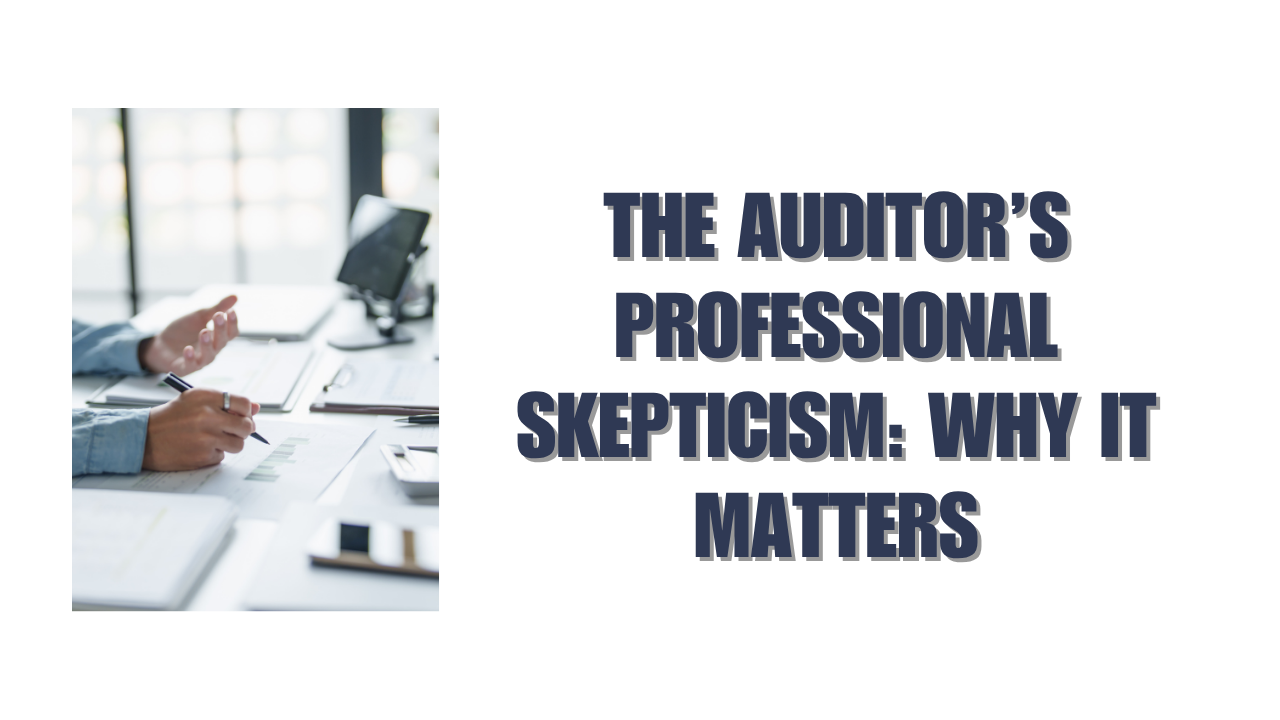At Aurora Financials, we understand that effective risk management is essential for every business. Identifying and managing risks helps protect your company’s assets, reputation, and financial health. As auditors and financial advisors, we play a critical role in evaluating how well your risk management processes work. That’s why knowing the right audit procedures for risk management is important—not just for compliance, but for strengthening your overall control environment.
In this article, we’ll walk you through the key audit procedures we use to assess risk management. We’ll explain how these procedures help uncover gaps, test controls, and provide assurance that your business is prepared for potential risks.
What Is Risk Management and Why It Matters in Auditing?
Risk management involves identifying, assessing, and controlling threats that could affect your company’s objectives. These risks might be financial, operational, regulatory, or reputational. For auditors like us, understanding your risk management framework allows us to tailor audit procedures and focus on the areas with the highest risk exposure.
Strong risk management reduces the chances of errors, fraud, or regulatory breaches, which directly impacts the accuracy and reliability of your financial reporting. Therefore, audit procedures for risk management are designed to evaluate both the design and operating effectiveness of your risk controls.
Planning the Audit with a Risk-Based Approach
The first step in audit procedures for risk management is planning with a risk-based mindset. We begin by gaining a deep understanding of your business and industry risks. This involves reviewing your internal risk management policies and previous audit reports, as well as identifying areas with significant risk that could affect your financial statements. This planning allows us to focus our resources on the most critical areas, improving both audit efficiency and effectiveness.
Key Audit Procedures for Risk Management
We start by reviewing your documented risk management framework to understand how risks are identified and categorized within your organization. This includes examining risk registers, evaluating how risks are prioritized, and checking whether there is clear ownership and accountability for managing these risks. Our goal is to ensure your risk management process is comprehensive and well documented.
Testing internal controls is a crucial part of our audit. We select samples of transactions or activities subject to controls, observe how control activities are performed, and verify authorizations and reconciliations. Additionally, we check system access controls and segregation of duties to confirm that controls are operating effectively and mitigating risks as intended.
We also review how your organization responds to identified risks. This means evaluating the implementation of mitigation strategies, assessing the timeliness and adequacy of corrective actions, and understanding the processes used for monitoring and reporting risk status. These procedures help us verify that risks are actively managed, not just identified.
Regulatory compliance forms another important audit area. We assess your compliance programs by reviewing policies related to relevant laws and industry standards. We test samples of compliance-related transactions and evaluate how changes in regulations are tracked and incorporated into your risk management framework. Ensuring compliance helps prevent costly penalties and protects your company’s reputation.
Finally, we use analytical procedures and data analysis to detect unusual trends or anomalies that might indicate risk areas. By comparing current data with prior periods or budgets, investigating unexpected variances, and analyzing large datasets with technology tools, we can uncover hidden risks that require further attention.
How We Document and Report Findings
Throughout the audit, we keep detailed documentation of our procedures and findings. This includes working papers supporting our tests and conclusions, risk ratings, and clear recommendations for improvement. We discuss identified weaknesses or gaps with your management team and provide audit reports that offer practical insights and actionable steps to enhance your risk management framework.
The Benefits of Rigorous Audit Procedures for Risk Management
Applying thorough audit procedures for risk management brings many benefits. It enhances confidence in your financial reporting, reduces exposure to fraud and errors, and improves your internal controls and operational efficiency. These outcomes not only satisfy stakeholders and regulators but also strengthen your business resilience in a complex environment.
Conclusion
Effective risk management is vital to your business’s stability and growth. At Aurora Financials, our carefully designed audit procedures for risk management help evaluate and improve your risk controls and processes. By working with us, you gain not only assurance for compliance but also valuable insights to build a more resilient and secure financial future.
If you want to learn more about how our audit services can help your business manage risk better, reach out to us. We’re here to support your journey toward stronger, more reliable financial practices.
FAQs
1. What are audit procedures for risk management?
Audit procedures for risk management are the steps auditors take to evaluate how well a company identifies, assesses, and controls risks that could impact financial reporting and operations. These procedures involve reviewing risk documentation, testing internal controls, and analyzing compliance to ensure risks are managed effectively.
2. Why is risk management important in an audit?
Risk management allows auditors to focus their work on areas where the potential for error or fraud is highest. It helps ensure that financial statements are accurate and reliable, which benefits shareholders, regulators, and management alike by reducing financial and operational uncertainties.
3. How does Aurora Financials tailor audit procedures for different industries?
We customize our audit procedures based on the specific risks, size, and regulatory environment of each industry. This tailored approach ensures we address the unique challenges our clients face, providing relevant and practical audit insights that support effective risk management.






